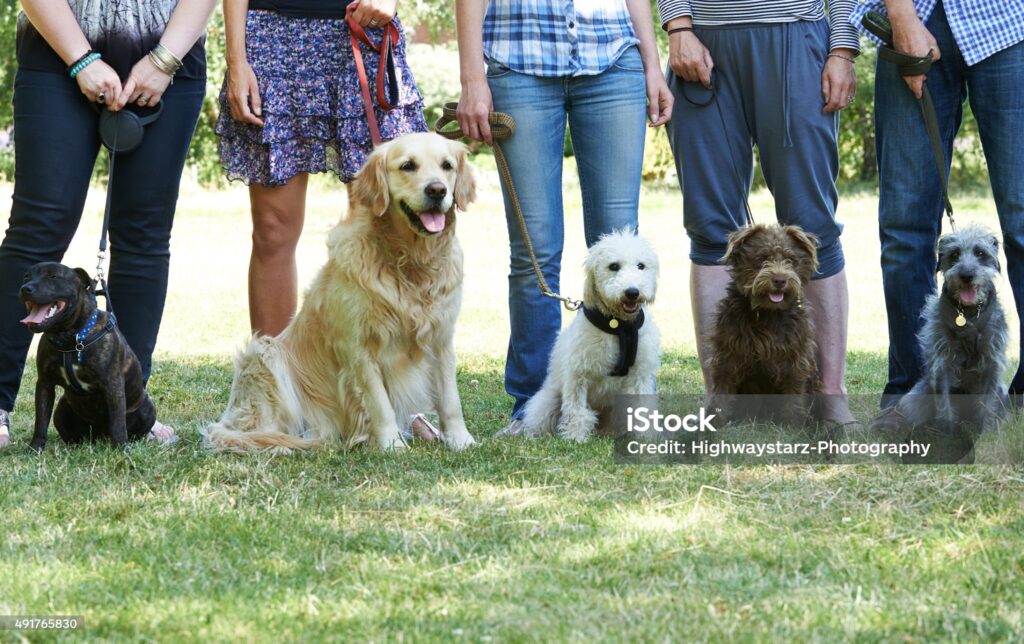Why Punishment-Based Training Can Backfire

For many years, punishment-based training methods like leash corrections, scolding, and even more severe tools such as shock collars were the go-to approaches for training dogs. These methods focus on correcting unwanted behaviors by using negative consequences. However, in recent years, more and more dog trainers and behaviorists have recognized that this approach can do more harm than good.
While punishment might seem like a quick fix, it often comes with serious side effects that can impact your dog’s well-being and your relationship with them.
Punishment Can Cause Fear and Anxiety
One of the biggest downsides of punishment-based training is that it can make your dog fearful or anxious. When a dog is punished, they often don’t fully understand why it’s happening, especially if the punishment isn’t delivered immediately after the unwanted behavior. Instead of learning what you want them to do differently, they may simply become afraid of you, certain situations, or even training itself.
A fearful dog is much more likely to develop other behavior issues, such as aggression, avoidance, or submissive urination. Fear undermines the trust that is essential for a strong relationship between you and your dog.
It Can Damage the Bond Between You and Your Dog
Your dog looks to you for guidance, safety, and love. Punishment-based training can damage that bond because your dog may begin to associate you with fear and discomfort rather than safety and trust. Dogs thrive in environments where they feel supported and understood, and punishment creates an atmosphere of uncertainty and stress.
Positive reinforcement, on the other hand, strengthens the bond between dog and owner by focusing on rewarding desired behaviors, making your dog more eager to work with you.
Punishment Doesn’t Teach the Right Behavior
Punishment tells your dog what not to do, but it doesn’t give them any direction on what they should do instead. For example, if your dog jumps up on guests and you scold them, they only learn that jumping gets them in trouble—they don’t learn that sitting calmly will get them praise and attention.
By using positive reinforcement, you’re teaching your dog what behaviors you want to see, which is much clearer and more effective for long-term learning. When dogs understand what earns them rewards, they are more likely to repeat those behaviors on their own.
Punishment Can Lead to Aggression
Dogs that are punished harshly or frequently may develop defensive aggression. This is especially true if the punishment is physical, such as hitting or using tools like prong collars. When a dog feels threatened, they may react by biting or growling, not because they are “bad” dogs, but because they feel they need to defend themselves.
In contrast, positive reinforcement reduces the likelihood of aggressive reactions by building your dog’s confidence and creating a positive association with learning.
Punishment Can Suppress Behavior Without Addressing the Cause
Punishment-based methods often result in the suppression of behaviors rather than addressing the underlying cause. For example, if your dog is barking excessively because they are anxious, punishing the barking might stop it temporarily, but it doesn’t address the anxiety itself. The root of the behavior remains unaddressed, which means it will likely surface again in other ways.
Positive reinforcement focuses on teaching alternative, appropriate behaviors and addressing the cause of the problem, making it a more holistic and effective solution.
When Corrections are Necessary: Using Them Mindfully
While my focus is on positive reinforcement, there are situations where a well-timed, fair correction may be needed. It’s important to distinguish between a correction and punishment. A correction, when done appropriately, should not be harsh or intimidating—it’s more about providing clear feedback in the moment to guide your dog’s behavior.
For example, if a dog is about to engage in a dangerous behavior, like running into the street, a quick, firm interruption can be necessary to keep them safe. In these cases, a verbal marker or leash guidance might be used to stop the behavior. However, it’s crucial that this correction is followed by clear guidance on the desired behavior and positive reinforcement when the dog makes the right choice.
Corrections should always be minimal and proportional to the situation. They are a tool for clarity, not for punishment. Over-reliance on corrections can create stress and confusion, which is why they should be used sparingly and always in conjunction with positive reinforcement. The goal is to guide your dog toward success and understanding, not to instill fear.
A Balanced Approach for Success
Positive reinforcement training offers a kinder, more effective approach for teaching your dog desired behaviors. By rewarding your dog for doing the right thing, you not only eliminate unwanted behaviors but also create a more trusting, confident, and happy dog. However, in certain situations where immediate safety or clarity is needed, a well-timed correction can play a role.
Ultimately, training is about communication and understanding, not control and fear. When you focus on positive reinforcement and use corrections sparingly and mindfully, you’ll see long-term success and a stronger relationship with your dog.